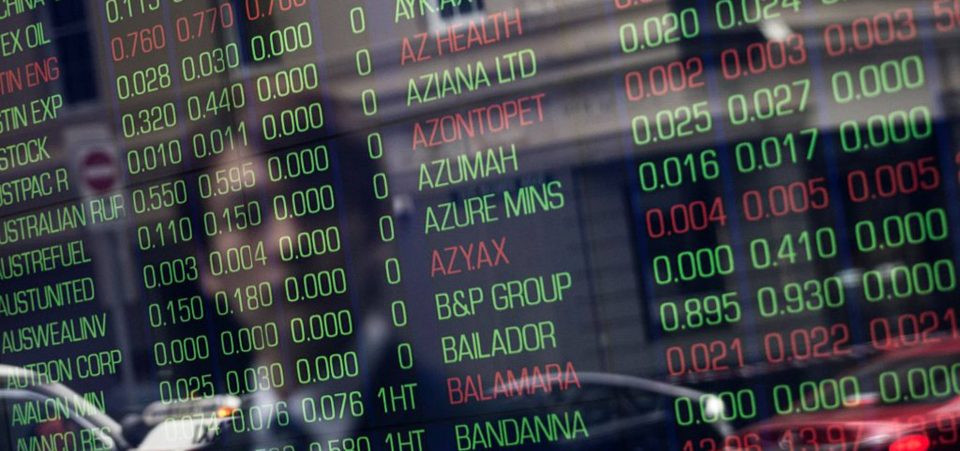All Major U.S. Equity Benchmarks Hit Record Levels
Trumpmania on Wall Street continues, with all four U.S. equity benchmarks hitting record levels on Monday. The S&P 500, Dow Jones Industrial Average (DJIA), NASDAQ, and the Russell 2000 Index hit all-time highs for the first time since 1999.
By Tuesday, the Dow Jones had climbed even higher, topping 19,000 for the first time. The S&P 500 broke through 2,200, and the Russell 2000 is on its longest winning streak since 2003.
The new milestone for the Dow Jones marks an annual gain of 9.1%. That’s quite a turnaround for the index, which was down more than 11% in the January sell-off. The Dow Jones is up more than six percent since immediately before the U.S. election.
Meanwhile, the new record for the S&P 500 represents an annual gain of 7.9%. That’s a reversal of fortune from the depths of the January sell-off in which the S&P 500 had lost 12.6% of its value. Since the Donald Trump rally began, the S&P 500 has advanced more than five percent.
Is there any real foundation for the rally, aside from the exuberance surrounding the Trump presidency? Not really.
Sure, the S&P 500 just ended a record five-quarter earnings recession, but that just means the index has crawled out of a hole. It doesn’t mean it’s on top of the world when it comes to earnings and revenue growth. But that’s not how investors are seeing it.
Investor sentiment can clearly be a lot more powerful than underlying fundamentals. Third-quarter earnings growth was modest, but there is growing enthusiasm that Trump’s plans to cut taxes and increase fiscal spending will translate into sustained economic growth.
Thanks to the new benchmark records, stocks are no longer stuck in the tight range and investors are increasingly optimistic. But correlation is not causation. Just because investors are optimistic does not mean corporate earnings and revenue are going to increase throughout 2017 and 2018.
Trump Rally on Last Legs
We all know what happened to equities after 1999. Record levels not founded on fundamentals led to corrections and crashes.
All four major benchmarks are at record levels, and investors couldn’t be more pleased. The CBOE Volatility Index (VIX), better known as the “fear index,” is near 12.41, which are levels not seen really since the lead-up to the financial crisis of 2008.
The VIX measures the implied volatility of S&P 500 index options. If the index rises, it means investors fear a market sell-off or correction. If it’s low, investors are complacent and not worried about a stock market correction.
The VIX is running in step with sky-high investor sentiment. Optimism about the short-term direction of the stock market is at its highest levels since February 2015. Neutral sentiment is at a two-year low, and pessimism is also down. (Source: “AAII Investor Sentiment Survey,” American Association of Individual Investors, last accessed November 22, 2017.)
Today, roughly 46.7% of investors are bullish. This is a +7.8% change from last week, and the highest level since February 2015. Just 26.6% are bearish, which is a –5.0% change from last week. Neutral sentiment is at a two-year low of 26.8%.
What is the biggest factor influencing the growing optimism? Donald Trump. Outside of the Trump factor, just nine percent of investors are focused on corporate earnings, eight percent on the economy, and three percent on valuations.
The VIX might be low, and complacent investor sentiment high, but there are still a lot of issues to be worried about: the stock markets are overvalued, we’re just out of an earnings recession, and there are fears of an ongoing global economic slowdown (Europe, Japan, China). Lest we forget, the U.S. is still cobbled with a huge debt load, one that will deter growth for years to come.
With stocks overvalued, there is little room for legitimate growth unless a company is reporting solid earnings growth and not relying on broader market sentiment. There seems to be a lack of earnings growth on Wall Street.
In light of record levels buoyed by untested euphoria about President-elect Donald Trump’s economic action plan, investors may want to consider investments that will do well in a stock market correction.
This includes the ProShares Short Dow30 (ETF) (NYSE:DOG), an inverse fund that goes up when the Dow Jones goes down. The ProShares Short S&P 500 (ETF) (NYSE:SH) is an inverse fund that tracks the daily performance of the S&P 500. Meanwhile, the Credit Suisse AG – VelocityShares Daily 2x VIX Short Term (NYSE:TVIX) provides two times the leveraged exposure to the S&P 500 VIX Short-Term Futures index.
One sector that did really well when the markets corrected in January 2016 was gold mining stocks. When it comes to market turmoil, big gold mining stocks like Goldcorp Inc. (NYSE:GG), Barrick Gold Corporation (NYSE:ABX), and Newmont Mining Corp (NYSE:NEM) tend to do well.






